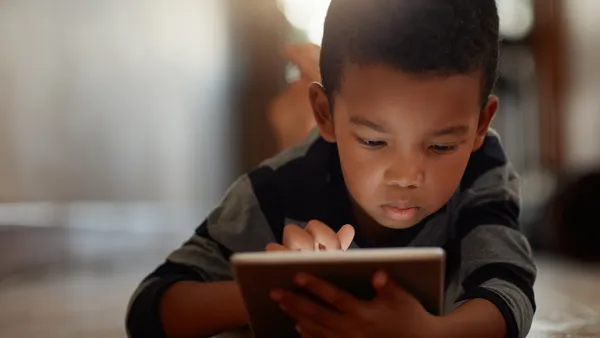Dive Brief:
- After tech company RealNetworks started offering K-12 schools facial recognition software for free this summer, a Seattle private elementary school is using the system as a way to increase security, according to The Associated Press.
- The University Child Development School told parents they could add their face to the surveillance system so if they came to the school, the technology would recognize them and open the door. So far, 300 parents have participated, lessening the need for a school employee to manually answer a buzzer when visitors arrive, AP reports.
- While some say this technology — called Secure, Accurate Facial Recognition, which is pronounced "safer" —makes the school more secure and can help prevent violent incidents like school shootings, critics say it infringes on privacy and damages school climate.
Dive Insight:
Facial recognition technology shows up a lot in our daily lives. Facebook memorizes faces to identify people in photos, and even iPhones now unlock using this software. But this equipment is also used for security or tracking individuals. Police and other law enforcement agencies search databases full of drivers’ license photos to find a suspect, a missing person or a key witness. And in schools, especially when safety seems to be a bigger priority than ever, it lets known faces into the building while keeping unfamiliar ones out.
It sounds like a good thing, and many agree. It could keep unfamiliar faces from getting into a school in the first place, which could have arguably prevented some school shootings. RealNetworks is planning to expand the product to schools across the country to boost safety, but some are asking if this is the right move?
Bringing in this kind of technology could change the way students feel at school. Rather than a warm, welcoming environment, an automated door blocked by surveillance tech feels more like an institution than a place of learning. It’s also another virtual data folder at risk of being hacked into. And, in many cases, the shooter is a known face in the school community, which this equipment wouldn’t address.
Facial recognition is also largely unregulated, which raises questions and concerns. Technology is developing quicker than anyone — including the government — can keep up with, making it hard to pass restrictions. On top of that, the leaders of many of these companies don’t make it easy, and recent scandals have shown that companies are using data for much more than we thought.
School safety is a multi-pronged topic that’s difficult to fully address. But in any school update, it’s important to keep students and parents in the loop and determine how the community feels about a particular policy. If they’re okay with using this type of surveillance technology, it could be something to consider. But if not, it might make sense to consider other tactics.







 Dive Awards
Dive Awards








